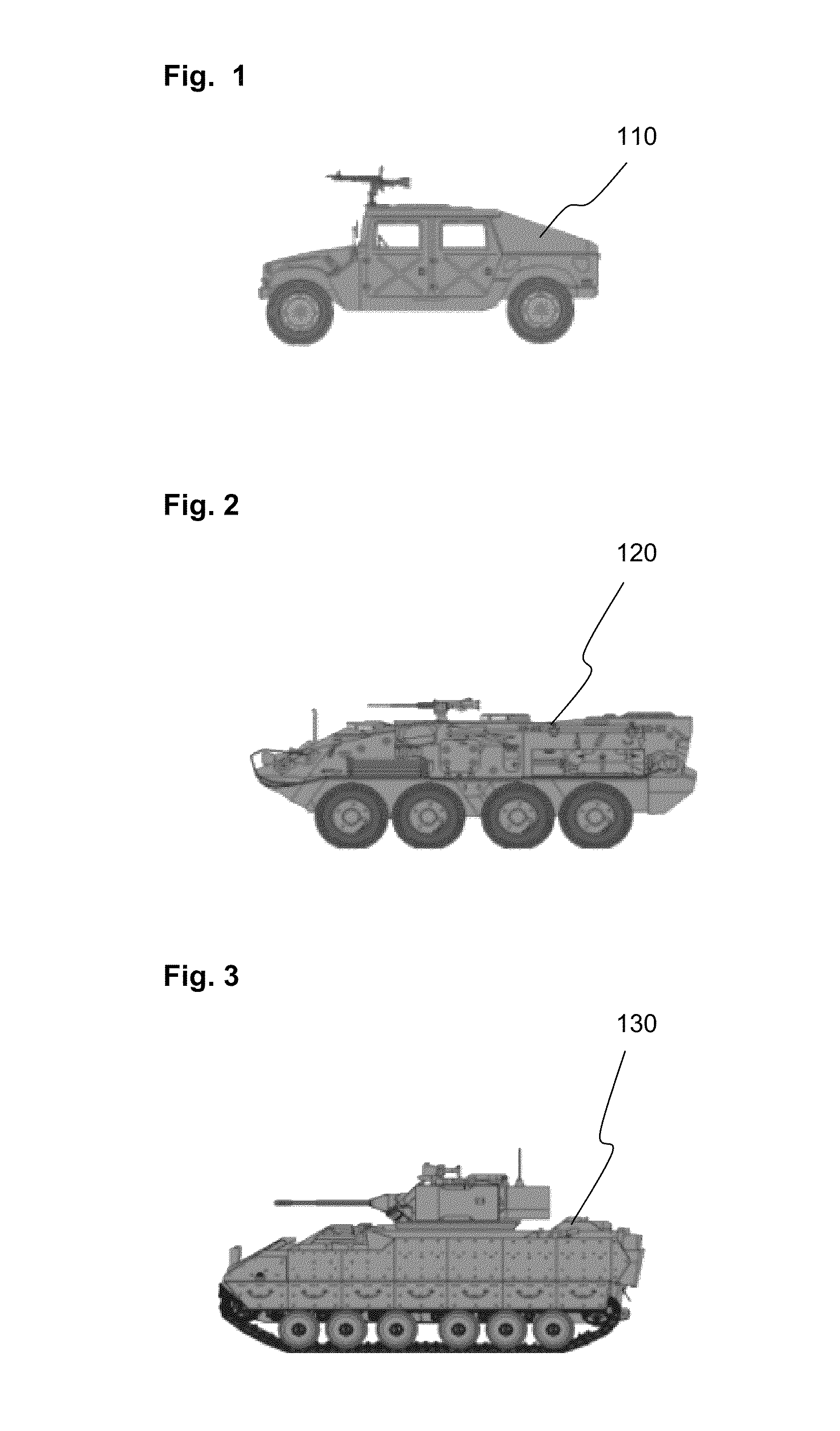Al-Mg alloy product suitable for armour plate applications
a technology of alloys and armour plates, applied in the field of aluminum alloy plate products, can solve the problems of high difficulty in welding of alloys aa7039, present corrosion or stress corrosion problems to a great degree, etc., and achieves favourable strength-to-weight ratio or specific strength, improve mass efficiency, and reduce specific density
- Summary
- Abstract
- Description
- Claims
- Application Information
AI Technical Summary
Benefits of technology
Problems solved by technology
Method used
Image
Examples
example 1
[0129]On an industrial scale by means of DC-casting several ingots of 400 mm thickness have been cast having a composition within the range of AA5059, namely, in weight percent: 5.45% Mg, 0.81% Mn, 0.51% Zn, 0.14% Zr, 0.09% Si, 0.08% Fe, 0.03% Ti, balance aluminum and unavoidable impurities. The ingots have been scalped, then preheated for 8 hours at 510° C., then hot rolled to a gauge of 28 to 57 mm, and then cold stretched for 6% as a first cold working operation, then annealed with about 15 minutes soak at about 250° C., and then cold stretched about 6% or subjected to a cold rolling reduction of about 7% as a second cold working operation resulting in the final plate thickness. The hot rolling practice was such that the cold working reduction could be varied to investigate the mechanical properties as function of the final plate thickness. The cold worked plates received no further heat-treatment after the last cold working operation.
[0130]The mechanical properties (tensile stre...
example 2
[0133]This example relates to aluminum alloy plate of 38.8 mm gauge according to this invention, in particular the preferred embodiment of the AA5059 alloy manufactured according to the process and chemical composition of Example 1. The plate was tested for its ballistic properties and compared against its armour plate counterpart AA5083-H131.
[0134]Two ballistic tests have been carried out, namely an armour piercing test using 0.3 inch (6.72 mm) projectiles pursuant to MIL-DTL-46027J of September 1998, and with 20 mm fragment simulating projectiles pursuant to MIL-DTL-46027J of September 1998. In both tests the V50 limit in m / s is determined. The V50 limit or v50 value is defined as the arithmetic mean of the 2(3) lowest projectile velocities giving complete penetration and the 2(3) highest velocities giving partial penetration. “2(3)” means two out of three. These velocities should fall within a bracket of 18.3 (27.4) m / s (MIL-DTL-46027J(MR)). The results are listed in Table 2.
[013...
PUM
| Property | Measurement | Unit |
|---|---|---|
| temperature | aaaaa | aaaaa |
| ultimate tensile strength | aaaaa | aaaaa |
| elongation | aaaaa | aaaaa |
Abstract
Description
Claims
Application Information
 Login to View More
Login to View More - R&D
- Intellectual Property
- Life Sciences
- Materials
- Tech Scout
- Unparalleled Data Quality
- Higher Quality Content
- 60% Fewer Hallucinations
Browse by: Latest US Patents, China's latest patents, Technical Efficacy Thesaurus, Application Domain, Technology Topic, Popular Technical Reports.
© 2025 PatSnap. All rights reserved.Legal|Privacy policy|Modern Slavery Act Transparency Statement|Sitemap|About US| Contact US: help@patsnap.com


